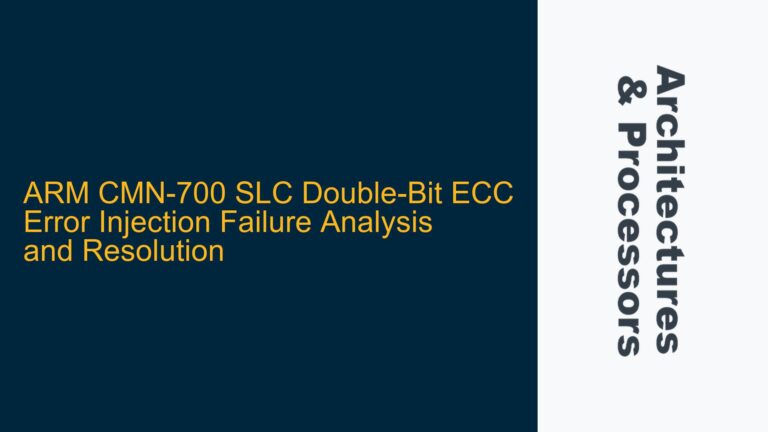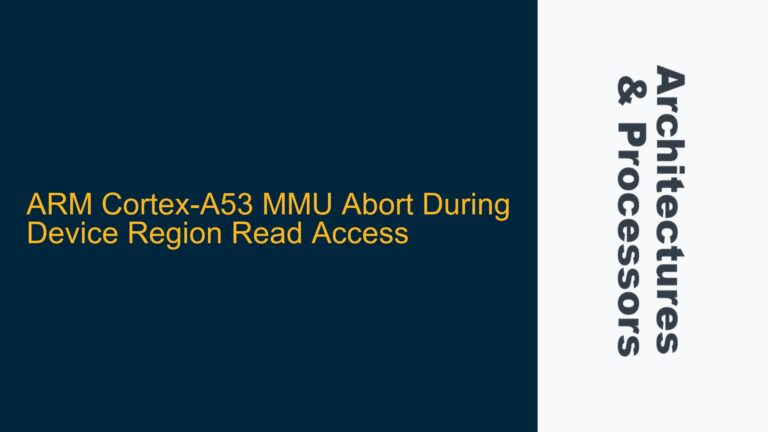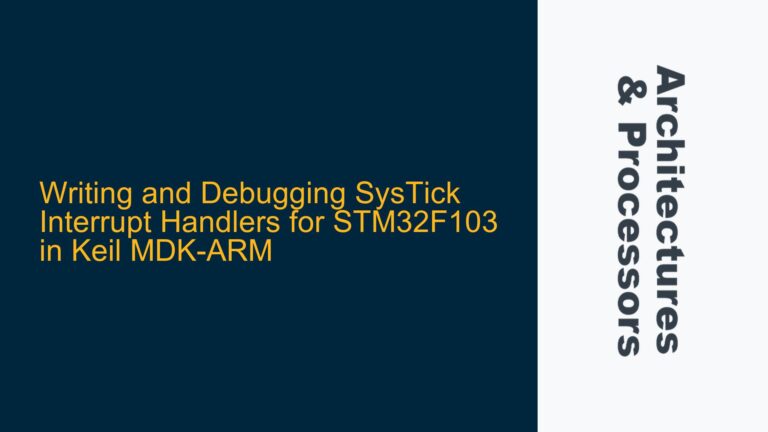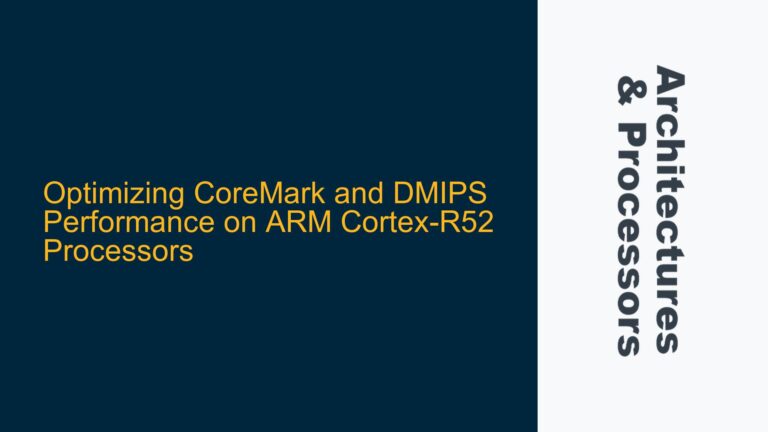ARM Cortex-M0+ Register Usage in C Function Calls with 1 and 2 Parameters
The ARM Cortex-M0+ processor, being a member of the ARMv6-M architecture, follows a specific calling convention for function calls, which dictates how parameters are passed between functions and how registers are utilized. Understanding this convention is critical for debugging, optimizing, and writing efficient embedded firmware. The Cortex-M0+ uses a subset of the ARM Architecture Procedure Call Standard (AAPCS), which defines the use of registers for parameter passing, return values, and temporary storage during function calls.
When a C function is called on the Cortex-M0+, the first four parameters are typically passed in registers R0 to R3. If the function has more than four parameters, the additional parameters are passed on the stack. The return value of the function is usually placed in R0. This convention ensures efficient function calls with minimal overhead, which is particularly important in resource-constrained embedded systems.
For functions with one or two parameters, the Cortex-M0+ uses R0 and R1 to pass these parameters. The following sections provide a detailed breakdown of the register usage, along with examples in both C and assembly language, to illustrate how these parameters are handled.
Memory Layout and Register Allocation During Function Calls
The ARM Cortex-M0+ has 13 general-purpose registers (R0-R12), a stack pointer (SP, R13), a link register (LR, R14), and a program counter (PC, R15). Among these, R0-R3 are designated as argument registers for function calls. When a function is called, the caller places the first parameter in R0, the second parameter in R1, and so on, up to R3. If the function requires more than four parameters, the additional parameters are pushed onto the stack in reverse order (right-to-left).
The stack plays a crucial role in function calls, especially for saving the return address and local variables. The Cortex-M0+ uses a full descending stack, meaning the stack pointer decrements before storing data and increments after retrieving data. During a function call, the return address is automatically saved to the link register (LR), and if the function calls another function, the LR must be saved to the stack to preserve the return address.
Here is an example of a C function with one parameter and its corresponding assembly code:
// C code
int square(int x) {
return x * x;
}
; Assembly code for square function
square:
MULS R0, R0, R0 ; Multiply R0 by itself (x * x)
BX LR ; Return to caller
In this example, the parameter x is passed in R0, and the result is also returned in R0. The MULS instruction performs the multiplication, and the BX LR instruction returns control to the caller.
For a function with two parameters, the second parameter is passed in R1:
// C code
int add(int a, int b) {
return a + b;
}
; Assembly code for add function
add:
ADDS R0, R0, R1 ; Add R0 and R1 (a + b)
BX LR ; Return to caller
In this case, a is passed in R0, and b is passed in R1. The ADDS instruction adds the two registers, and the result is returned in R0.
Common Pitfalls in Parameter Passing and Register Usage
While the Cortex-M0+ calling convention is straightforward, there are several potential pitfalls that developers may encounter. One common issue is the improper handling of the stack when dealing with functions that have more than four parameters. If the caller fails to push the additional parameters onto the stack in the correct order, the callee will misinterpret the parameters, leading to undefined behavior.
Another issue arises when the link register (LR) is not properly saved before calling another function. If a function calls another function without saving LR, the original return address will be overwritten, causing the program to return to an incorrect location. This can result in crashes or infinite loops.
Additionally, developers must be cautious when using floating-point parameters or return values. The Cortex-M0+ does not have hardware support for floating-point operations, so floating-point values are typically passed in integer registers or on the stack. Misalignment or incorrect interpretation of these values can lead to incorrect results.
Debugging and Optimizing Function Calls on Cortex-M0+
To debug and optimize function calls on the Cortex-M0+, developers should first ensure that the calling convention is being followed correctly. This can be verified by examining the generated assembly code and checking the register usage and stack operations. Tools such as disassemblers and debuggers can be invaluable for this purpose.
When optimizing function calls, developers should aim to minimize the number of parameters passed to functions, as this reduces the overhead associated with stack operations. Functions with four or fewer parameters are more efficient, as they can be passed entirely in registers. For functions with more parameters, consider restructuring the code to reduce the parameter count or grouping related parameters into a structure.
Another optimization technique is to use inline functions for small, frequently called functions. Inline functions eliminate the overhead of the function call by inserting the function’s code directly into the calling function. However, this should be used judiciously, as it can increase the size of the compiled code.
Finally, developers should ensure that the stack is properly managed, especially in deeply nested function calls or recursive functions. Stack overflows can be difficult to debug and can cause unpredictable behavior. Using tools to monitor stack usage and setting appropriate stack sizes can help prevent these issues.
Practical Examples and Assembly Code Analysis
To further illustrate the concepts discussed, let’s examine a more complex example involving multiple function calls and parameter passing. Consider the following C code:
// C code
int multiply(int a, int b) {
return a * b;
}
int calculate(int x, int y, int z) {
int temp = multiply(x, y);
return temp + z;
}
The corresponding assembly code for these functions is as follows:
; Assembly code for multiply function
multiply:
MULS R0, R0, R1 ; Multiply R0 and R1 (a * b)
BX LR ; Return to caller
; Assembly code for calculate function
calculate:
PUSH {LR} ; Save link register
BL multiply ; Call multiply function
ADDS R0, R0, R2 ; Add R0 and R2 (temp + z)
POP {PC} ; Restore link register and return
In this example, the calculate function calls the multiply function. The parameters x and y are passed in R0 and R1, respectively, while z is passed in R2. The multiply function returns the result in R0, which is then added to z in the calculate function. The PUSH {LR} and POP {PC} instructions ensure that the return address is preserved during the function call.
Conclusion
Understanding the ARM Cortex-M0+ calling convention and register usage is essential for writing efficient and reliable embedded firmware. By following the guidelines outlined in this post, developers can avoid common pitfalls, optimize their code, and ensure proper parameter passing and stack management. Practical examples and assembly code analysis provide valuable insights into the inner workings of function calls on the Cortex-M0+, enabling developers to debug and optimize their code with confidence.






